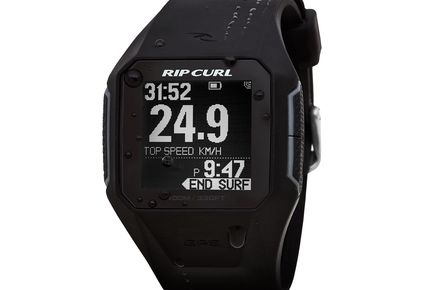Published on the 24/04/2014 | Written by Newsdesk

RipCurl has unveiled a GPS smartwatch that counts surfers’ waves, calculates their top speeds, and can then sync the information to a smartphone or computer; signaling yet more wearables for the masses…
Google Glass, the high watermark for wearable technology, has yet to be made available for sale in Australia or New Zealand – but interest in wearable technologies is rising rapidly among tech-savvy consumers and a growing number of large enterprises. New analysis released by IDC this month has forecast that 19 million wearable computers will be sold in 2014 – rising to 112 million by 2018.
Describing wearable technology as having a “long runway” IDC claims that quantified-self focused technologies such as the Fitbit, Nike+ or Jawbone bands – and presumably the (far chunkier) RipCurl watch – will seed consumer demand with other devices such as Google Glass taking longer to gain traction. IDC’s not predicting much mainstream activity for that sort of wearable technology before 2016.
However some businesses aren’t waiting. Australia’s Heritage Bank will this week auction a man’s business suit featuring an embedded near field communications chip and antenna to allow wearers to make a payment of up to $100 by swiping the sleeve over a contactless payment terminal.
While the bank has only commissioned 12 such suits, which feature a Visa paywave chip in the sleeve, and they are intended only for trials and promotional activity, the bank’s chief operating officer John Williams said he could envisage future deployments in sports-wear, allowing cyclists or gym members to make a payment by swiping their smart-clothing over a contactless payments terminal.
The banks have been fast to spot the potential of wearable technology – both to facilitate payments and to gather customer data. Westpac New Zealand and St George in Australia are both running Google Glass trials and plan to release an application once the devices are available locally to allow customers to check their balances or transfer funds.
St George last week also released a mobile banking app for Android smartwatches in Australia that allows users to check balances on the watch and be directed to the nearest ATM. It can’t however yet be used for contactless payments.
Telstra also has a project underway to develop applications for Google Glass ready for release as soon as the technology lands locally.



























